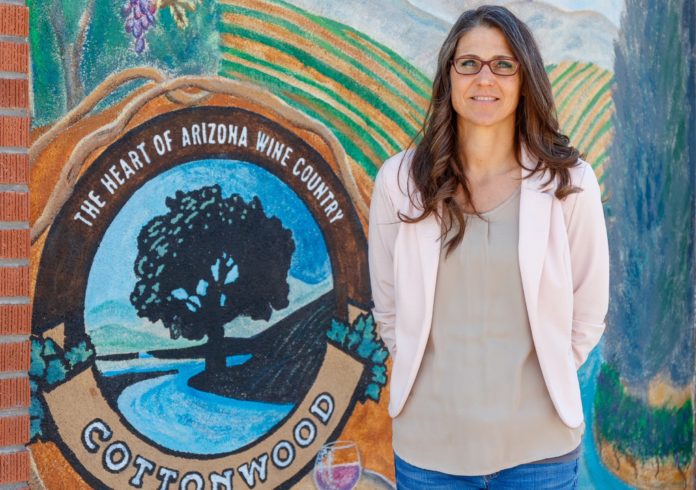There is a hole in Cottonwood’s pension fund, just as there is for most municipalities in the state.
The Arizona Public Safety Personnel Retirement System has over $15 billion in unfunded liability, representing 27.2% of the total fund needed to fund pensions for retired government employees.
The city’s share, to pay for the retirements of its police and fire staff, is $18 million lower than it was projected to be at this point, based on disappointing returns on investments made by the fund at the state level.
At a meeting on March 16, Cottonwood City Council voted 6-1 to seek a $20 million bond to pay for the shortfall, as well as put $2 million into reserves to accrue interest and pay for future shortfalls if necessary.
Tosca Henry was the lone dissenting vote against the proposal and expressed skepticism about the projected interest accrued on the pension fund monies if the bonding plan went through.
Under the current setup without any changes, the hole in the city’s pension liability would require increased funding from the city’s budget to go toward the pension liability, with the expectation that by 2030 it would exceed 100% of employee salaries, according to Cottonwood Finance Director Kirsten Lennon.
“If we continue on the same course we’re going and pay it back over the next 15 to 20 years, we will pay over $30 million into the fund to cover unfunded liability,” Lennon said. “Basically the goal is to pay for the money up front.”
Under the bonding plan, the city would take out a bond to pay for the entirety of the shortfall now, and pay for the interest on the bond rather than paying more into the pension fund. The money in the pension fund would also accrue interest. Stifel Financial Corp., an investment banking firm the city has partnered with, estimates that interest accrued would average 7.3%. According to Stifel, even in the case of an economic downturn, interest on the pension fund would likely exceed the annual interest on the bond, which Lennon estimates to be 3% to 4%, taking advantage of current low interest rates.
“It’s a great deal. That’s why people are proposing it, because paying the 3% is better than paying the 7%,” Lennon said. “The bond payment is flat so in 2030 when we’re supposed to be paying at 101%, the bond won’t increase. The way that we’re structuring this bond it would start out a little bit less than what we’d be paying on the liability and then [the difference] would slowly increase.”
Under the projections, the bonding would require the city to pay a level $1.5 million for the period of the bond, as opposed to an estimated increase up to $2.5 million under the status quo.
Council asked Lennon to not only come up with a plan for the bond, but also to consider the possibility of a sales tax increase from 3.5% to 3.65% to pay down the unfunded liability as well.
“If things stay the same, and we make the same sales tax rate this next year, if we increase it by 0.15% [3.5% to 3.65%], and we take the allocation from 2019 and the increase and combine them, that’s about a million dollars,” Lennon told the council, describing her estimates for the sales tax increase.
After hearing both options, the council sided in favor of bonding, based on the attractiveness of the plan as well as the reluctance to increase taxes on Cottonwood residents.
“I appreciate you getting all the information together on what a sales tax would do, but I’m just not in favor of that, for a lot of reasons, but also the fact that it’s not going to be that big of a savings compared to the bonding,” Mayor Tim Elinski said. “So it really doesn’t seem to be a sensible solution.”
“I’m very uncomfortable with adding more sales tax at this time,” Vice Mayor Doug Hulse said. “The bonding seems to be a level way of being able to pay this unfunded debt without increasing our indebtedness as far as what we have to plan for, and I think we’d be better off doing this rather than raising sales tax. I’m just really reluctant to raise the sales tax at this time.”
Councilwoman Henry expressed concern about the plan, worried that the 7.3% projected interest rate on the pension was too rosy, especially based on the current rate of return of just 5.6%.
“We’re going into this based on numbers we know aren’t correct,” Henry said. “My concern is that includes our expected savings.”
City Manager Ron Corbin pointed out that if the rate of return falls below expectations, the shortfall in the pension liability under the current setup would be even larger, meaning that the bond plan would nevertheless be beneficial.
“If you earn an average of 6% or 5%, you’re still better off for having done this, even if it’s not a direct match,” Omar Daghestani, from Stifel, told the council. “You’d only be worse off if PSPRS earned less than your bonding rate …. If that were to happen, something pretty bad has happened in this world.”



